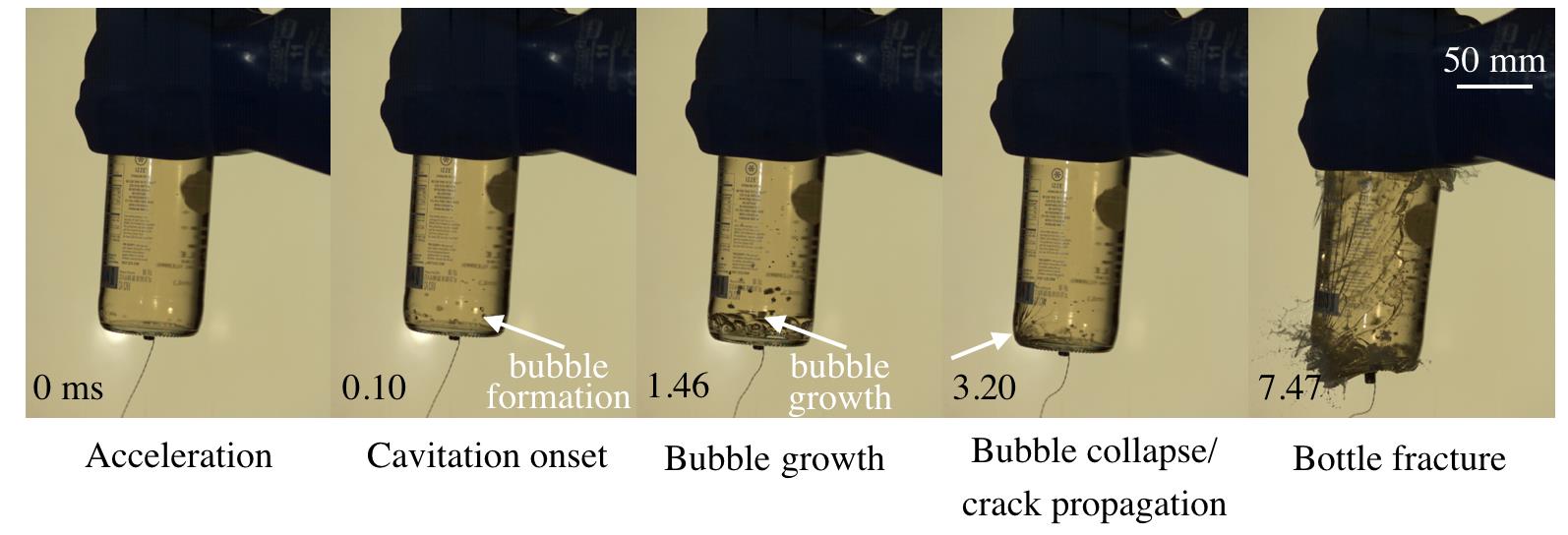Universal indicator for predicting cavitation onset
August 1, 2017
Associate Professor Yoshiyuki Tagawa (Division of Advanced Mechanical Systems Engineering, Institute of Engineering, Tokyo University of Agriculture and Technology) and his research team derived a new equation for predicting cavitation onset in an accelerating liquid. This discovery contributes to avoid severe damages induced by cavitation collapse observed in various systems such as fluid pipes, ship propeller and even some brain injury. This research was published on July 25 in the Proceedings of the National Academy of Science of the United States of America.
When acceleration is imposed on a liquid-filled container, bubbles (so-called, cavitation) can form in a liquid due to sudden pressure drop of a liquid. Violent collapse of cavitation bubbles induces fracture of the container, which is seen in underground water pipes or blood vessels for example. More familiar case, we can observe such damages when we strike the top of a liquid-filled bottle (Fig. 1). To avoid cavitation-induced fracture, accurate prediction of cavitation onset is necessary. However, nobody has derived the equation for prediction of acceleration-induced cavitation. Professor Tagawa and his research team have approached to this theme by using high-speed cameras.
They proposed an alternative equation: the ratio of the pressure drop induced by acceleration and the liquid property. In order to validate the proposed equation, they conducted separate series of experiments with varied parameters; the magnitude of acceleration, liquid types, liquid volume and materials of the container. Remarkably all experimental data agreed with the equation. It indicates that the newly proposed equation describes universal thresholds of cavitation onset in an accelerated liquid.

Paper
| Authors | Zhao Pan, Akihito Kiyama, Yoshiyuki Tagawa, David J. Daily, Scott L. Thomson, Randy Hurd, and Tadd T. Truscott |
|---|---|
| Title | Cavitation onset caused by acceleration |
| Journal | Proceedings of the National Academy of Science of the United States of America |
| DOI | 10.1073/pnas.1702502114 |
| URL | http://www.pnas.org/content/early/2017/07/21/1702502114 |
Acknowledgment
This work was supported by Japan Society for the Promotion of Science KAKENHI Grants 26709007, 16J08521, and 17H01246.
Related Information
TUAT research factors (English): http://www.rd.tuat.ac.jp/en/activities/factors/index.html
Researcher information (Japanese):Yoshiyuki Tagawa
Press release (Japanese): キャビテーションの発生条件を解明 (PDF:322KB)
Contact
Yoshiyuki Tagawa
Associate Professor, Division of Advanced Mechanical Systems Engineering,
Institute of Engineering, Tokyo University of Agriculture and Technology
Tel +81-42-388-7407
E-mail tagawayo(insert @ symbol here)cc.tuat.ac.jp
